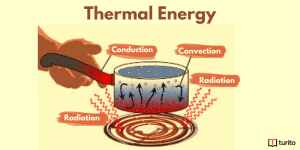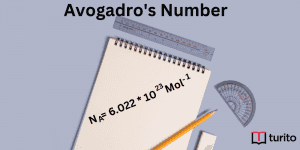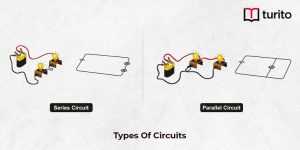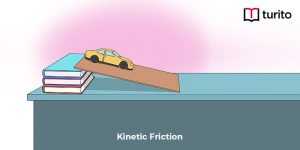Mechanical waves can be classified into two categories— transverse and longitudinal waves. Seismic P-waves, sound waves, and ultrasound waves are a few longitudinal waves examples. Ocean waves and electromagnetic waves are transverse waves. This blog is focused on learning about longitudinal waves definition, its types, and its characteristics.
Definition of Longitudinal Wave
According to the longitudinal wave definition, longitudinal waves are those which have a displacement of the medium in the same direction in which the wave travels.
The wavelength of a wave is the distance between the centres of two areas of rarefaction or compression of a longitudinal wave that lie consecutively to each other. It is denoted by lambda (λ). If the regions of rarefaction and compression of two waves coincide, it is called constructive interference.
On the other hand, if the areas of rarefaction and compression of a longitudinal wave do not coincide, it is called destructive interference.
If you release a compressed coiled spring at one end, you can see a wave of compression travelling through its length, followed by a stretching region. There is a point on any coil of the spring that moves with the wave. It returns along the same path, passes through the neutral position, and then again reverses its motion.
The same compression and rarefaction are experienced by sound waves moving through the air. This compression and rarefaction occur in the direction of the medium as the waves move back and forth.

Longitudinal Wave Formula
The formula of a longitudinal wave is:
y(x,t)= cos[ω(t−x/c)]
Here,
x represents the distance travelled by the point from the source of the wave
y represents the point of displacement on the travelling sound wave
t represents the time elapsed
y0 stands for the oscillation amplitude
ω represents the angular frequency of the wave
c represents the wave speed
Quantity x/c = time ( wave takes to travel the distance x).
We can represent the frequency (f) of the wave by the following formula:
f=ω2π
We hope that by now, you have a clear understanding of what a longitudinal wave and its formula is. Now, let us learn about what sound waves and pressure waves are.
Compressions and Rarefactions
A vibrating tuning fork can produce a longitudinal waves. As it vibrates, it pushes the nearby air particles. While its forward motion pushes the air molecules in a horizontal direction, the backward retraction of the fork produces an area of low pressure that allows the air particles to move back to the left.

Because the air particles move in a longitudinal direction, there are points where they compress and some other points where they are spread farther apart. These regions are respectively referred to as compressions and rarefactions.
While the air pressure is high in the regions of compressions, it is low at rarefactions. Below is a diagram depicting a sound wave produced by a moving tuning fork that propagates through the air. You can see the compressions and rarefactions of the wave in the diagram.

Sound Waves
A sound wave is a longitudinal waves created by the vibrating movement of particles travelling through a conductive medium. The tuning fork is a longitudinal wave example ( sound wave example).
The amplitude of the wave in sound waves can be defined as the difference between the highest amount of pressure produced by the wave and the pressure of the air in an undisturbed state. The speed at which the sound propagates depends on the composition of the medium through which it propagates, its type, and the temperature.

Pressure Waves
Sound is a longitudinal wave that comprises repeating patterns of low and high-pressure regions that move via a medium, which is sometimes called pressure waves. If you use a detector to detect a sound wave, it will be able to detect pressure fluctuations as the sound waves propagate through the detecting device.
At some point, the device would detect a high-pressure corresponding to the arrival of compression of the longitudinal wave at the site of detection. At some other point, the detector would detect normal pressure.
Finally, it will detect a low pressure which would correspond to the arrival of rarefaction at the site of detection. These pressure fluctuations, as detected by the detecting device, occur at regular intervals periodically.
So, a graphical representation of the pressure vs time appears as a sine curve. The peak of this curve represents the compressions while the low points represent the rarefactions. The zero point represents the pressure the air would possess if it faced no disturbances.
Below is a diagram depicting the relationship between a wave’s longitudinal nature in air and the pressure-time fluctuations created by it at a particular point.

Therefore, the sound is a longitudinal wave propagating through the air having regions of compressions and rarefactions. As the sound is a longitudinal wave that travels through air or any other medium, the motion of the air particles does not occur in a transverse manner. Therefore, these are indeed longitudinal waves.
Characteristics of Longitudinal Waves
Compression
Compression refers to an area in a longitudinal wave where the wave particles lie closest to each other.
Rarefaction
It refers to an area in a longitudinal wave where the wave particles lie farthest away from each other.
Wavelength
The wavelength of a wave refers to the distance between two consecutive points on the wave. These two consecutive points can be lying between two rarefactions or two compressions. In other words, the wavelength is the distance covered by a disturbance in the medium in one wave cycle. Since the pattern is repeated by a wave once every cycle, sometimes the wavelength represents the length of the repeating patterns.
This length is generally measured from the crest of a certain wave to the crest of the adjacent wave in a transverse wave. It can also be measured from the trough of one wave to that of the adjacent wave’s trough. There are no troughs and crests in a longitudinal wave, so there is a different method to calculate its wavelength.
A longitudinal wave comprises repeating patterns of rarefactions and compressions. Here, we measure the wavelength as the distance between one compression to the next or the distance between one rarefaction to the next.
Amplitude
Amplitude can be defined as the maximum displacement of the wave particle from its point of rest. Amplitude, in a longitudinal wave, is the distance from the equilibrium position in the medium to the region of rarefaction or compression.
Period and Frequency
The period is the time the wave takes to complete one wavelength, while the number of wavelengths per second is the frequency of a longitudinal wave.
Difference between Longitudinal and Transverse Wave
| Longitudinal Waves | Transverse Wave |
| The direction of motion of a longitudinal wave is towards its propagation. | The motion of a transverse wave is perpendicular to the direction in which it propagates. |
| The longitudinal wave example is a sound wave. | For example, water waves. |
| It is composed of several regions of compressions and rarefactions. | It is composed of crests and troughs. |
Conclusion
We hope that after going through the blog you will be able to answer most of the common questions asked about longitudinal waves in your exam. Read it again carefully to clear your concepts at a fundamental level.
Frequently Asked Questions
1. What are the characteristics of sound?
The characteristics of sound are pitch, quality, and loudness. Pitch is the position of a sound wave on a range of frequencies, either high or low. The quality of a sound is a characteristic that allows us to differentiate one sound from another. The loudness of a sound refers to its intensity.
2. What happens if a pebble is dropped in the still water of a pond?
If we drop a pebble in the still water of a pond, ripples are formed. These ripples spread out, forming alternate crests and are circular in form. This disturbance occurs as a result of the kinetic energy of the air particles that makes them oscillate. This kinetic energy is transferred to the next layers, which results in the formation of ripples.
3. Define mechanical waves and what are their types.
A mechanical wave is created by oscillating matter that transfers energy through the medium it propagates. There are two types of mechanical waves— transverse and longitudinal.
A longitudinal waves can be defined as one where the direction of the vibration of the medium lies parallel to that of the wave. The displacement of the medium is, however, in the direction of the movement of the wave. Its main properties are rarefaction, amplitude, compression, frequency, and period.
4. State the main difference between a transverse and longitudinal wave.
While a longitudinal waves propagates in the direction of the medium, a transverse wave travels perpendicular to the direction of the medium. Transverse waves are composed of troughs and crests, whereas longitudinal waves are composed of rarefactions and compressions.

Relevant Articles
Understanding Thermal Energy: What It Is and How It Works
Thermal energy is essential to our daily lives, from warming …
Understanding Thermal Energy: What It Is and How It Works Read More »
Read More >>Avogadro’s Number: Meaning, Importance, and More
Introduction The concept of measuring the microscopic particles that make …
Avogadro’s Number: Meaning, Importance, and More Read More »
Read More >>Kinetic Friction – Definition, Laws, Types
Kinetic Friction Kinetic force is a force acting between two …
Kinetic Friction – Definition, Laws, Types Read More »
Read More >>




















Comments: